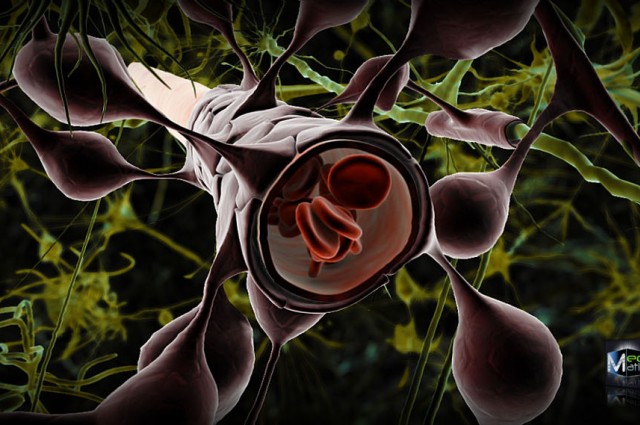cool things to do with sound. fact 9

FACT 9: GETTING MEDICAL TREATMENT TO THE BRAIN MORE EFFICIENTLY
The blood-brain barrier is essential to our survival, but sometimes it can be a major obstacle to life-saving medical treatment. French company CarThera claim to have found a way to open the barrier when needed, shutting it again thereafter.
The barrier is made from endothelial cells that keep the blood and the brain's extracellular fluids apart. Its job is to allow through the things the brain needs from the blood, such as water, oxygen and sugar, while keeping out neurotoxins. However, just like the junk mail filter on your email, sometimes it fails on both fronts – letting through things it shouldn't and keeping out some that are necessary.
All the large-molecule drugs with potential to treat brain conditions such as tumors have trouble penetrating the blood-brain barrier, and even 98% of smaller therapeutic molecules are excluded.
Efforts have been made to attach therapies to carriers that can penetrate the barrier, or to inject drugs directly into the brain, but both have problems. And while tumors naturally create leaks in the barrier, allowing chemotherapeutic drugs to pass through, the efficiency is low – a tiny portion reach the tumor, while the rest remain in the bloodstream to cause side-effects.
CarThea took a different approach entirely. They implanted ultrasound emitters in the brains of four people with glioblastoma, the most dangerous form of brain tumor. Microbubbles were then injected. Ultrasound pulses made the bubbles vibrate, in the process pushing apart the blood-brain barrier's cells. MRI images showed the microbubbles reaching the extracellular fluid.
"We hope this means the chemotherapy drug is doing the same thing," CarThera's Michael Canney told New Scientist. CarThera presented their results at Focused Ultrasound symposium in North Bethesda, Maryland and estimate, based on animal models, that the barrier will allow drugs through for around six hours after a two minute treatment. The animal research saw a 200-600% increase in the concentration of the chemotherapeutic agent at the tumor site compared to methods that rely on local leakiness.
The ultrasound emitters are placed as close to the tumor as possible, and the barrier is only weakened over a 5cm2 patch, leaving the rest of the brain protected.
The research has yet to be published in a peer reviewed journal because it will take several more months before it is possible to tell what effect the treatment is having on the tumors.
Studies in animals suggest an unexpected benefit from the procedure. Animals with the equivalent of Alzheimer's Disease had reduced numbers of plaque after having their barriers opened using the same technique, even when they were not given drugs to fight the condition. Canney thinks the blood's immune cells, given the opportunity to cross the barrier, may do at least some of what is needed, and the same may be true for tumors.




